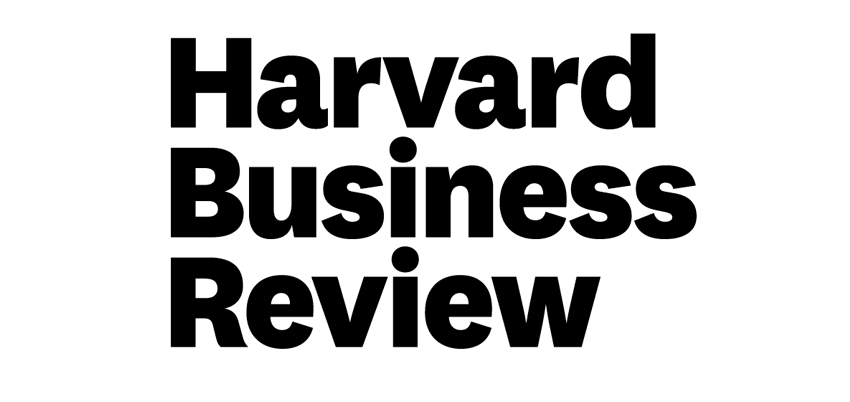How to Improve the Engagement and Retention of Young Hourly Workers
More than half of them plan to leave within the year, survey reveals

Editor's Note: SHRM has partnered with Harvard Business Review to bring you relevant articles on key HR topics and strategies. In this article, the authors outline how HR and management can increase engagement with young hourly employees.
What would you do if the majority of your entry-level, hourly workforce was planning to leave in less than a year? More than half of the 1,200 young people working in entry-level jobs we surveyed said that was their plan — and less than a quarter felt highly satisfied with their job. That's expensive for business. Turnover can cost up to 200% of an employee's annual salary, depending on the role. In industries like retail, customer service, and hospitality, entry-level turnover alone costs billions of dollars each year, based on voluntary turnover rates and annual replacement costs. Meanwhile, employee disengagement results in higher absenteeism, more accidents, lower business profitability, worse customer service, and a lower share price.
 To understand how employers can improve engagement and retention, FSG worked with Hart Research Associates to survey over 1,200 entry-level, hourly workers between the ages of 17 and 24, and interviewed dozens of companies to find out how they have improved retention. The young people we surveyed worked in a wide variety of industries, including health care, manufacturing, retail, and hospitality. They shared five key insights for employers looking to improve retention and engagement, including how to improve manager training, diversity and inclusion, and scheduling. The good news is that multiple employers are already innovating in these areas.
To understand how employers can improve engagement and retention, FSG worked with Hart Research Associates to survey over 1,200 entry-level, hourly workers between the ages of 17 and 24, and interviewed dozens of companies to find out how they have improved retention. The young people we surveyed worked in a wide variety of industries, including health care, manufacturing, retail, and hospitality. They shared five key insights for employers looking to improve retention and engagement, including how to improve manager training, diversity and inclusion, and scheduling. The good news is that multiple employers are already innovating in these areas.
Train frontline managers to support people and process.
The job satisfaction of the young people we surveyed was driven in large part by how they thought their manager treated them. They said that being treated fairly and with respect was even more important than their income. Yet nearly 50% of the women and 40% of the men surveyed reported that they struggled at work because they felt they were treated unfairly by their manager. In fact, 32% of those surveyed said they lost a job in the past due to unfair or disrespectful treatment by a manager.
How can companies help their managers become more effective? One proven method is investing in specific training for frontline managers, who often are promoted quickly into that position and have never managed a team. MOD Pizza sends all frontline managers to "The School of MOD" within the first three to six months of their tenure. It's an in-person, management-training program that coaches new managers on communication, people management, and building a good workplace culture. Ninety-six percent of managers who attended the training reported that it increased their confidence that they could do their job well.
While the majority of frontline-manager training focuses on topics like inventory, cash management, and customer service, more companies are recognizing that equipping managers to support their teams is also critical to their businesses. HMSHost, the largest provider of food and beverage services for travelers in North America, piloted its Engagement Training Program to help frontline managers provide authentic recognition to its employees, listen and solve problems, and deliver specific, actionable feedback to their teams. In the sites where it tested this training, it received enthusiastic feedback from managers and associates and saw early improvements in associate engagement and retention. HMSHost will be launching workshops on engagement across the entire company.
Offer professional-development opportunities.
Our research indicated that young people are more than twice as likely to stay at their job for more than a year if they see their job as a career or a stepping stone to a career. Yet only 35% of young people we surveyed described their current job in those terms. How can employers close that gap?
First, employers can offer clear and meaningful opportunities for professional growth within the company. Chipotle highlights a clear career path for entry-level employees on its website and directs new hires to it on Day 1. The career path shows promotion possibilities and the wages and benefits attached to each stage of professional growth. Over 90% of Chipotle's managers are promoted from within.
Second, employers can support educational attainment for young people. Forty-five percent of the youths we surveyed wanted to go to college, and the responses indicated that those who are enrolled in school while working are much more likely to stay in their current jobs. Starbucks recently expanded its College Achievement Plan to offer free tuition for online classes at Arizona State University and individualized guidance to all employees who want to know more about college. These changes removed cost, knowledge, and schedule barriers for employees, and early results indicate the changes are paying off: Employees enrolled in the plan are retained twice as long and promoted four times as often as similar employees not participating in the program.
Work toward inclusion, not just diversity.
Our research revealed gender and racial disparities in the way that young people experience employment. For example, the group that was least likely to see their job as a stepping stone to a career was African-American women, while the group most likely to see their job as a stepping stone to a career was white men. Regardless of race or ethnicity, women we surveyed were 10 percentage points more likely than men to say they have experienced unfair treatment from their managers. According to research done by Opportunity Nation, white men are overwhelmingly more likely to hold supervisory positions in the retail industry, while entry-level workers are more likely to be minorities and women.
Employers can create a more diverse and inclusive work environment — and there is clear evidence that doing so is good for business. Gap Inc. is an innovator in this area. In 2007, it created a program for teens and young adults facing barriers to employment called This Way Ahead. Ninety-eight percent of participants are people of color, 65% are women, and all are from low-income backgrounds. After a skills training and a 10-week paid internship, 75% of This Way Ahead graduates receive offers for positions at Gap, Old Navy, and Banana Republic stores. This Way Ahead is an effective talent strategy for Gap Inc. — the retention rate for these employees is double that of their peers, their performance ratings are on par with peers, and graduates have higher-than-average engagement scores.
Adopt proven scheduling practices.
The vast majority of youth we surveyed (83%) said they would be more likely to stay in their current job if they have more control over their work schedules. The most important aspects of scheduling that youth identified were predictability and flexibility. Young people want to know the days and times they are going to work in advance. They also want their managers to be flexible when unexpected events outside of work arise, such as sickness or transportation challenges.
While predictability and flexibility might sound challenging to offer at the same time, major employers of entry-level people such as QuikTrip and Trader Joe's have shown they can go hand in hand, according to research by Zeynep Ton. She breaks down the operational and human resource decisions that make this possible in her HBR article and book The Good Jobs Strategy. She points out that by cross-training employees and scheduling additional capacity, along with other operational choices, employers are able to offer predictable schedules, be flexible when unforeseen events like a sick child arise, and still beat their competition when it comes to profitability. QuikTrip and Trader Joe's report annual turnover rates below 15% versus a nearly 60% average for the retail industry, and the vast majority of their managers are promoted from within. (For more on her latest thinking, see HBR's Big Idea program The Good Jobs Solution.)
Offer access to key benefits and opportunities to work more hours.
Not surprisingly, young people value good benefits, wages, and hours. Our research showed that while they value benefits like overtime pay, a 401 (k) retirement-savings plan, and paid time off, the most important benefit by far is health insurance. That's why companies like UPS, Lowes, REI, and Starbucks are in high demand — they all offer some form of health insurance for part-time, hourly employees.
Sixty-one percent of the youths surveyed said they have struggled at work because they had a hard time making ends meet. For part-time workers, the number of hours worked are just as important as the hourly wage they're paid and often have a greater role in determining their take-home pay. In fact, more than 50% of the youths surveyed wanted to more work hours. Offering existing workers additional hours, rather than hiring new workers, may be one way to save on costs and improve employee satisfaction.
There is also a business case for raising wages. In 2014, IKEA decided to raise its minimum wage and peg it to MIT's living-wage calculator, which led to a 5% improvement in retention in less than six months. It was so successful from a business perspective that IKEA decided to raise wages again in 2015. Other low-cost retailers, from Costco to Trader Joe's, have also shown that raising wages can create a competitive advantage.
Our research findings make a clear business case for implementing these ideas. Employers that are leading the field in these areas are surpassing industry averages when it comes to retention and employee engagement. That doesn't just make them better places for young people to work; it makes them stronger businesses.
Disclosure: The Schultz Family Foundation and Walmart funded FSG's research. Walmart is a funder of FSG's Impact Hiring Initiative.
Kimberly Gilsdorf is an associate director at FSG, a global social-impact consulting firm. Fay Hanleybrown is a managing director at FSG, and Dashell Laryea is an associate at FSG.
An organization run by AI is not a futuristic concept. Such technology is already a part of many workplaces and will continue to shape the labor market and HR. Here's how employers and employees can successfully manage generative AI and other AI-powered systems.



